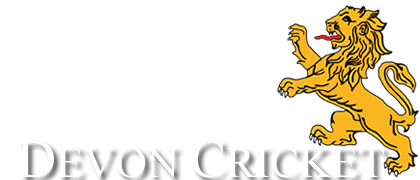The ECB has recently announced new helmet safety measures, which are being introduced with a view to reducing the risk of head and facial injuries within the game. The purpose of this brief note is to assist Leagues and Clubs at the recreational level to understand the key elements of these changes and what they mean.
Players over the age of 18
The ECB strongly recommends that all adult recreational cricketers should wear helmets for certain activities, preferably which meet the most recent British Safety Standard (see below). This recommendation applies to batting against all types of bowling, wicket-keepers standing up to the wicket (who may as an alternative wear face protectors) and fielders fielding closer than eight yards from the batsman’s middle stump, except behind the wicket on the off side.
Under 18s
The position in relation to u18s currently remains unchanged, and is governed by the ‘ECB Guidance on the Wearing of Cricket Helmets by Young Players’ (www.ecb.co.uk/youngplayershelmetguidance). In essence, batsmen and wicket-keepers standing up to the stumps must wear head protection when playing or practising. That Guidance should be referred to in full for the position in relation to u18s.
British Safety Standard
The latest British Safety Standard is BS7928:2013 (for both adults and juniors). The full list of helmets meeting this standard is available at www.ecb.co.uk/helmets. For wicket-keeping face protectors the relevant British Safety Standard is BS7929-2:2009 (again, for both adults and juniors).
The ECB understands that there is currently no specific women's helmet and as a consequence no specific standard for women's cricket helmets. As the size of the standard women's cricket ball is between the standard men and junior balls, it is recommended that women use helmets that have been tested against both the men's and junior sized ball, or at least against the junior size ball (as that could potentially get through the gap above the face guard on a men's helmet).
What do Leagues and Clubs need to do?
Whilst it is strongly recommended that all adult recreational cricketers wear helmets in the on-field circumstances detailed above, it is not mandatory for them to do so. For the avoidance of doubt, Leagues or Clubs do not need to go above and beyond the ECB’s recommendation by forcing their cricketers to wear helmets.
However, Leagues and Clubs in recreational cricket should ensure that their cricketers are made aware of the ECB’s above recommendation in relation to helmets, including the need to check that any newly purchased helmets meet the latest British Safety Standard. The ECB recommends that Leagues and Clubs bring the link above (i.e www.ecb.co.uk/helmets) to the attention of their cricketers and encourage all cricketers to carefully consider their own health and safety regarding helmet use.
Leagues and Clubs should always ensure that they have adequate public liability insurance.
February 2016
Updated Statement Released April 2016
The ECB strongly recommends that wherever possible junior players use head protectors which meet the new updated standard BS7928:2013 and have been tested against junior sized balls. That is not however to say helmets which meet the older BS7928:1998 cannot be used and whether it is possible for helmets meeting the new standard to be made available needs to be put in the context of the circumstances of individual clubs/schools.
If you have helmets that meet the BS7928:1998 standard, whether these helmets need replacing depends on a number of factors including the age of the helmets (most manufacturers advise between 3-5 years for the materials used in production); how well they have been looked after and the state of the various components on the helmet – the ECB cannot comment on any individual helmets and it is for the club/school that has looked after them to decide. However, it is strongly recommended that you ensure that any existing helmets have secure fastenings and the grille is set at a point where the smallest ball being used in a match or practice cannot pass through the grille.
If a club chooses to replace any helmets then the guidance recommends replacing them with ones that meet the new standard.
For the avoidance of doubt, the ECB’s guidance does not have force of law.


